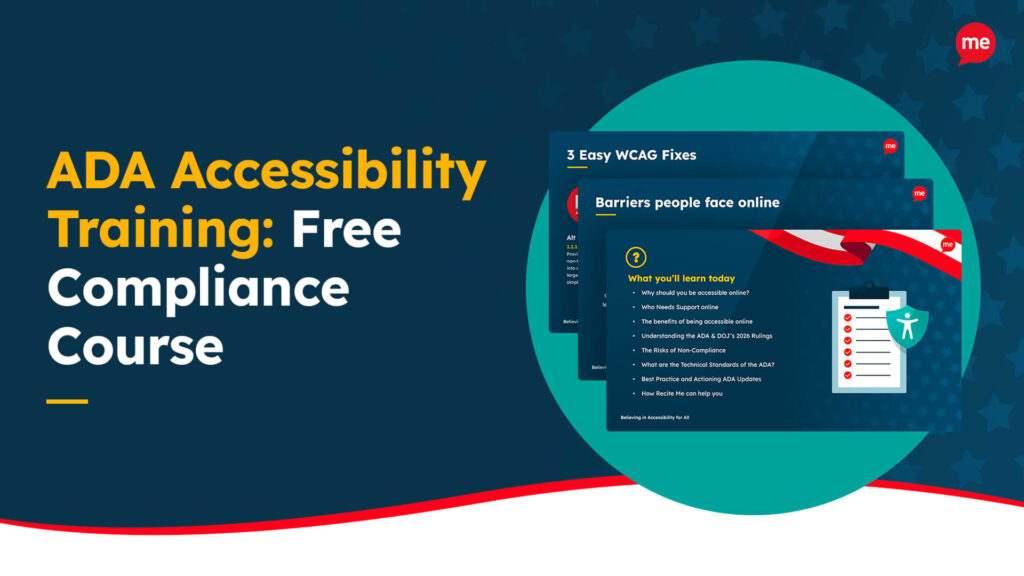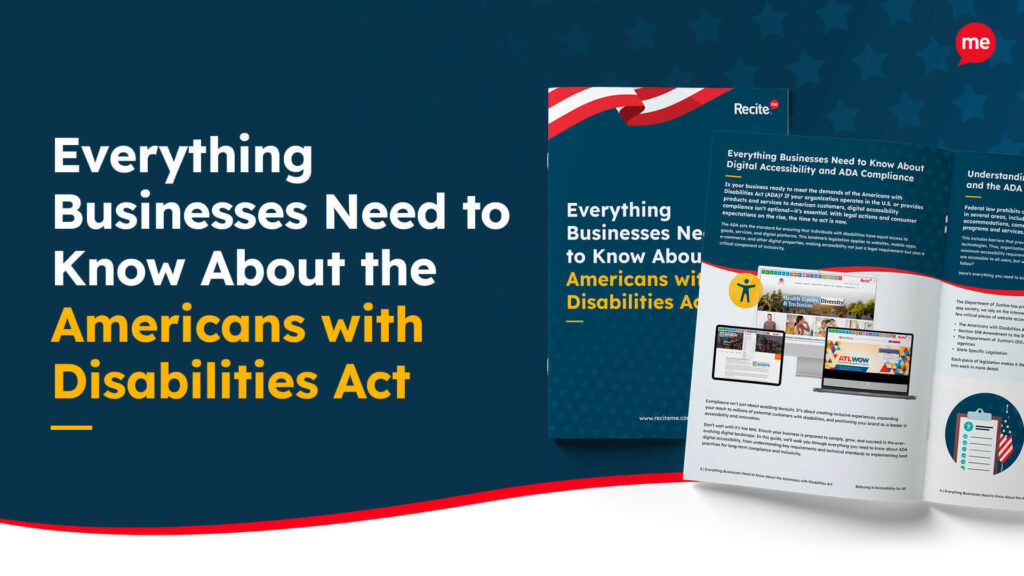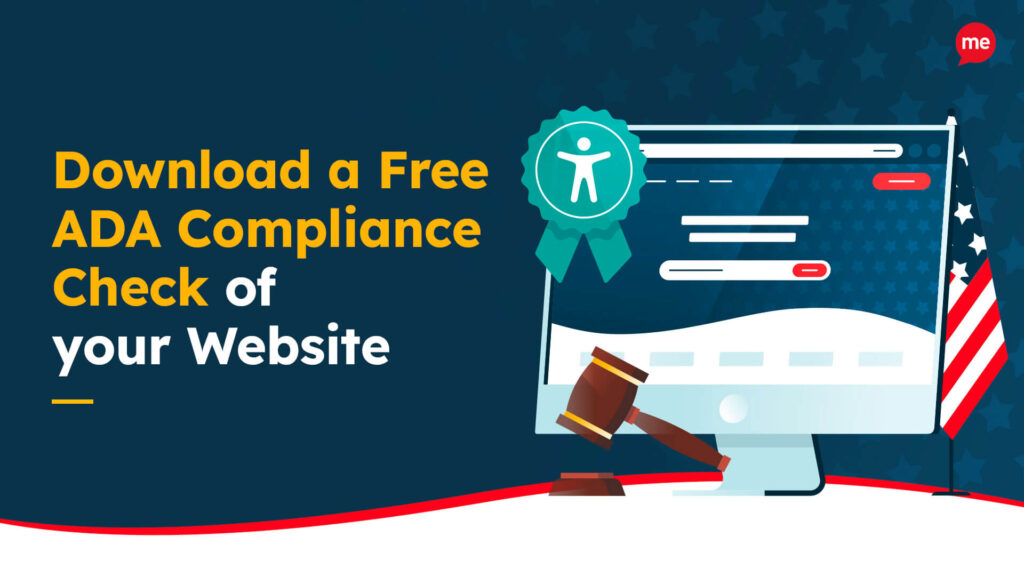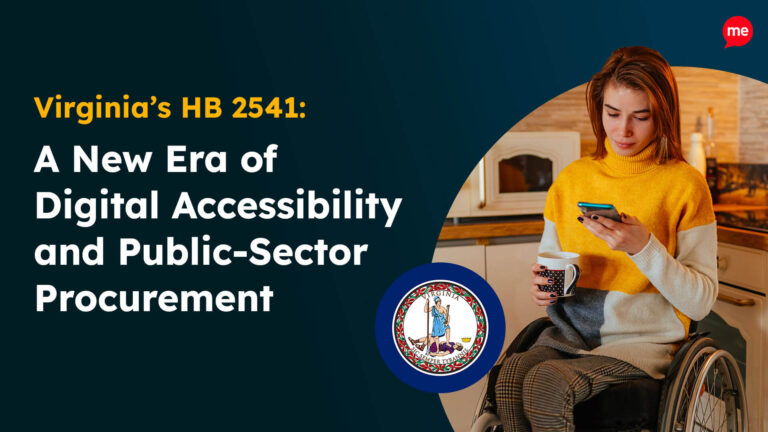Get A Free ADA Compliance Audit Of Your Website
Download NowThe Americans with Disabilities Act (ADA) is a landmark civil rights law designed to ensure equal opportunities for people with disabilities. With nearly 1 in 4 adults in the U.S. living with some form of disability, the potential for lawsuits to be brought against non-compliant businesses is high. But legalities aside, failing to adhere to the ADA’s requirements can be detrimental to your business’s reputation and financial growth. Want to know more about the ADA, whether it applies to you, and how to comply? This article is your go-to resource.
Understanding the Americans with Disabilities Act in California
The ADA was enacted in 1990 and prohibits discrimination against individuals with disabilities in all areas of public life, including employment, education, transportation, and digital spaces. In California, home to one of the nation’s largest disabled populations, the ADA plays a very important role in shaping the way businesses are set up and how they operate.
The ADA is a federal law, which means it serves all states across the U.S., broadly addressing discrimination against individuals with disabilities. It covers a variety of named domains, including employment (Title I), public services (Title II), and public accommodations and commercial facilities (Title III).
Digital accessibility in California falls under Title III of the ADA, which requires businesses and organizations that serve the public to ensure their goods, services, facilities, and accommodations are accessible to individuals with disabilities. Although the ADA was enacted before the internet became mainstream, courts and regulatory agencies have since interpreted Title III to include websites, mobile applications, and other digital platforms.

It’s worth noting that California also enforces its own state-wide accessibility law — the Unruh Civil Rights Act. This act extends ADA protections to a multitude of different protected groups beyond only disabilities, covering a lot of the same ground as the ADA. This dual layer of regulation means Californian businesses must navigate both federal and state guidelines to ensure compliance.
Want to make sure your website is compliant with the Americans with Disabilities Act? Then unlock the ADA compliance checklist now. Discover actionable steps to ensure ADA compliance, helping you avoid lawsuits and any other negative consequences of non-compliance.
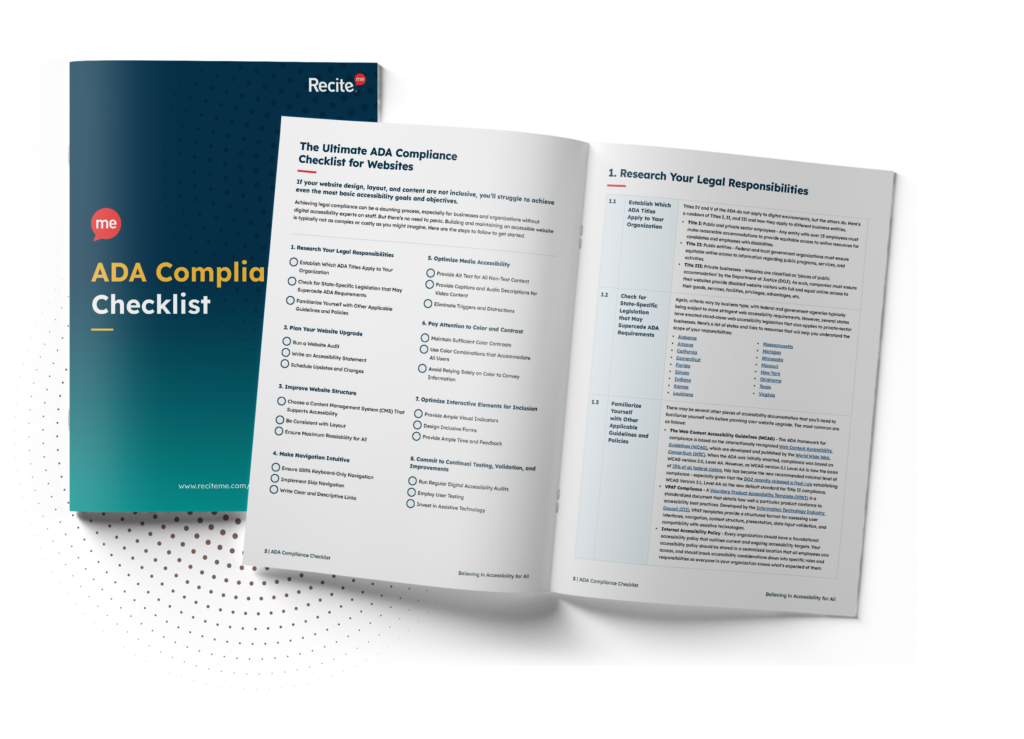
Which California businesses does the ADA apply to?
The ADA applies to a broad range of organizations in California, both public and private. Under Title I of the ADA, any employer with 15 or more employees must demonstrate compliance. Adding to this, all state and local government websites must adhere to ADA guidance regardless of their size, under Title II of the act.
Then there’s Title III. Under Title III, any organization considered a “public accommodation” must comply with the ADA regardless of the number of employees. But what exactly is a public accommodation?
A public accommodation is any business or facility that provides goods, services, or spaces to the general public. Under the ADA, these entities must ensure their offerings—whether physical or digital—are accessible to individuals with disabilities.
Here are a few examples of public accommodations:
- Retail stores
- Restaurants and cafés
- Hotels
- Theaters
- Healthcare providers
- Educational institutions
- E-commerce websites

Even small businesses, such as family-owned shops or local service providers, are not exempt if they serve the public, leaving very little wiggle room for ADA exemptions. In the rare case where ADA stipulations do not apply to your organization, it is still strongly recommended to follow the guidance outlined in the act. After all, it’s a safeguard against potential lawsuits, a way to future-proof your organization, and a sign of good ethics.
Best practices to become ADA web compliant in California
According to a 2023 WebAIM study, in which some one million website home pages were analyzed, an average of 50 accessibility errors per page were identified. This statistic highlights the specific need for website owners to comply with the ADA’s digital requirements, as defined by Title III of the act. This section unpacks 2 key strategies to help keep your digital products and services accessible to individuals with disabilities.
Regular accessibility tests
The first strategy is to employ regular and rigorous accessibility testing for ADA compliance. Testing enables you to identify barriers that prevent users with disabilities from accessing your content. In this way, it helps establish a start point by providing exact details of what needs improving.
There are a number of different methods and strategies you can use to approach accessibility testing best practices, but for comprehensive coverage, adopting a mix of all of them is the best way to go.

Here is a breakdown of the different methods:
- Automated testing: Tools like Recite Me’s accessibility checker provide a quick, data-driven scan of your site’s web pages. It analyzes your website’s code, using internationally-recognized standards like the Web Content Accessibility Guidelines as a reference point to identify any accessibility gaps. Automated accessibility testing tools excel at detecting issues like missing alt text, improper heading structures, poor color contrast, or incompatibility with assistive technologies.
- Manual testing: While automation is powerful, it has limitations. Manual accessibility tests, typically conducted by accessibility specialists or web developers, dive deeper into complex issues that algorithms may overlook. This can include the proper use of Accessible Rich Internet Applications (ARIA) roles, intricate navigation problems, or the comprehensibility of alt text.
- User testing: Involving people with disabilities in testing your website provides invaluable, real-world insights. Their feedback often uncovers usability challenges and nuances that both automated and manual testing can miss.
Once you’ve set up a testing system that includes all three auditing methods, the next step is to regularly schedule audits to ensure that your website evolves alongside accessibility standards and user expectations. As a bare minimum, audits should be conducted once a month, or after every design adjustment. This iterative process of ‘test and improve’ helps address a huge range of accessibility issues, ensuring ongoing compliance and inclusivity far into the future.
Meeting WCAG requirements
Once you’ve completed an audit, the next step is to action the results of said audit by referencing the Web Content Accessibility Guidelines (WCAG). The WCAG serves as the gold standard for ensuring digital accessibility by offering instructions on making digital content accessible.
They are a set of internationally-recognized accessibility standards set out by the World Wide Web Consortium (W3C), and they are based on a set of four principles, called POUR: perceivable, operable, understandable, and robust.
The standards define specific requirements for a host of different website elements, including color contrast, readability of fonts, compatibility with assistive technology, and keyboard navigability. Think of it like this: accessibility testing tells you where you need to be, and WCAG is your roadmap for getting there.
While the ADA does not mandate a specific version or compliance level of WCAG to be met, WCAG 2.1 Level AA is generally considered the accepted standard. Compliance levels range from Level A to Level AAA, where each subsequent level becomes more stringent in its requirements.

Aiming for Level AA allows essential needs to be addressed without demanding significant resources or capital. However, should your organization possess the necessary means, aiming for Level AAA compliance is always better. Meeting these guidelines not only supports compliance with Title III of the ADA but improves the overall user experience for all users.
Risks of not complying with ADA guidelines in California
To fail to comply with ADA guidelines is to fail to make your website, or business for that matter, accessible. Not only can this lead to an onslaught of costly litigation, but can also trigger a series of negative consequences for your business and its long-term growth. For businesses in California, it’s essential to understand these potential consequences if you are to avoid serious setbacks. In this section, we’ll explore the risks of ADA non-compliance in detail.
Legal Penalties
Failing to meet the requirements can lead to costly ADA lawsuits. Businesses that are found in violation of ADA accessibility standards can face substantial fines, sometimes as high as $75,000 for a first violation, with subsequent violations potentially costing up to $150,000 per instance. On top of that, legal fees can add up quickly, leaving your business financially vulnerable on multiple fronts.

Reputational Damage
ADA digital accessibility lawsuits are on the rise. In 2023, there were a total of 4,605 cases reported, marking a 14% rise from 2022. A lawsuit or public accusation of discrimination can significantly damage a brand’s reputation. Even if the lawsuit is not successful, the very fact you were involved in such a case can tarnish the public’s perception of your business for years to come.
Consumers are increasingly aware of accessibility issues, and businesses that neglect ADA compliance may face backlash from both the disabled community and the general public. In a time when online reviews and social media can make or break a company’s image, poor accessibility is a risk not worth taking.
Lost Market Opportunities
By disregarding accessibility, you are turning your back not only on your existing disabled customers, but the disabled community as a whole. By failing to accommodate these individuals, businesses miss out on a vast pool of potential customers, declining a huge opportunity to grow their sales.
Operational Setbacks
Addressing ADA compliance after launching a website or product can be more costly and time-consuming than doing so from the outset. Retrofitting a website to meet accessibility standards requires additional development, which can disrupt operations and lead to increased project timelines.
In some cases, businesses may need to completely overhaul certain digital assets, resulting in significant expenses and delays. Adopting a proactive approach to accessibility through a policy of ‘test and improve’ is not always possible, but is always preferred. It means that even if you’ve already launched your website, you can plan adjustments for the future according to your own project pipeline, rather than reacting frantically to a lawsuit settlement.
Get a free automated ADA compliance audit of your website. This audit will highlight compliance violations and provide the recommendations needed to meet ADA compliance standards.
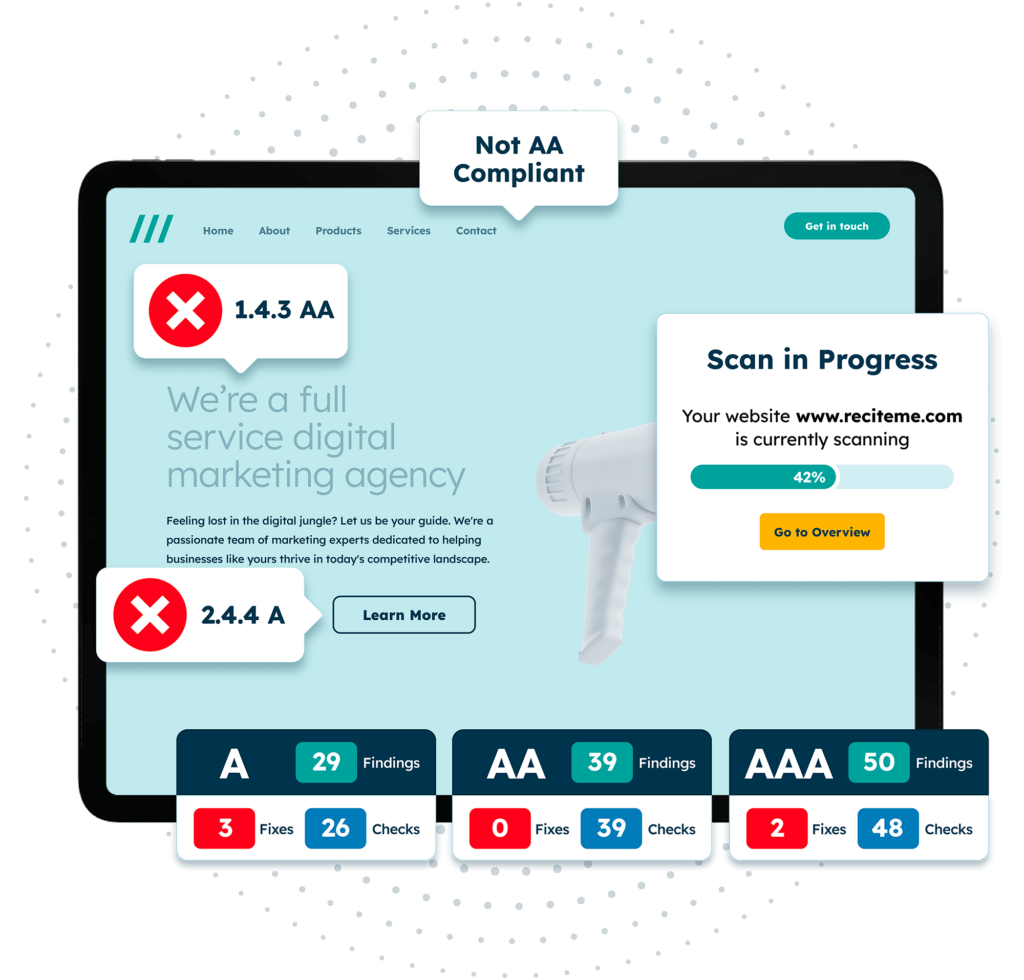
Examples of real ADA lawsuits in California
California has seen several high-profile ADA lawsuits, which underscores the importance of compliance. This section summarizes three noteworthy cases.
National Federation of the Blind v. Target Corporation
In 2006, one of the most famous lawsuits in California was filed against Target Corporation by the National Federation of the Blind (NFB). The case focused on the retailer’s website, which the NFB claimed was inaccessible to blind users.

The plaintiffs argued that Target’s website did not provide adequate support for screen readers, which are essential tools for visually impaired people to navigate the web. This lawsuit was notable for being one of the first major cases involving digital accessibility under the ADA.
The lawsuit resulted in a $6 million settlement, with Target agreeing to make substantial changes to its website so that it would meet accessibility guidelines within 3 years. Target also agreed that its coding employees would attend periodic training to ensure web accessibility and help prevent future violations.
This case highlighted the ADA’s increasing focus on digital spaces, not just physical spaces. It also set an important precedent for other businesses, demonstrating that ADA violations could extend to the online realm.
Robles v Domino’s Pizza LLC
In the case of Robles v Domino’s, Mr. Robles, a blind customer, sued Domino’s Pizza for having an inaccessible website and mobile app, as he was unable to order food due to the site not being compatible with his screen reader. The Ninth Circuit Court ruled in favor of Robles, stating that Domino’s was in violation of California’s Unruh Civil Rights Act. The court ordered Domino’s to make its website accessible according to WCAG 2.0 guidelines as a result.

Californians for Disability Rights v. Mervyn’s LLC
The Californians for Disability Rights v. Mervyn’s LLC case of 2002 involved a group of plaintiffs who filed a class-action lawsuit against the retail chain, Mervyn’s. The plaintiffs alleged that physical barriers at store locations, such as inadequate aisle space, violated the ADA. As a result, the retail chain agreed to make substantial modifications to its facilities, setting a precedent for ADA enforcement in California.
Need more help becoming ADA compliant?
The following resources are packed full of actionable tips and expert advice for making your digital content compliant with the Americans with Disabilities Act:
Free ADA Accessibility Training
Take the first step to ADA compliance by completing our training course.
Free ADA Accessibility Guide
Ensure your organization is meeting the requirements for ADA compliance.

